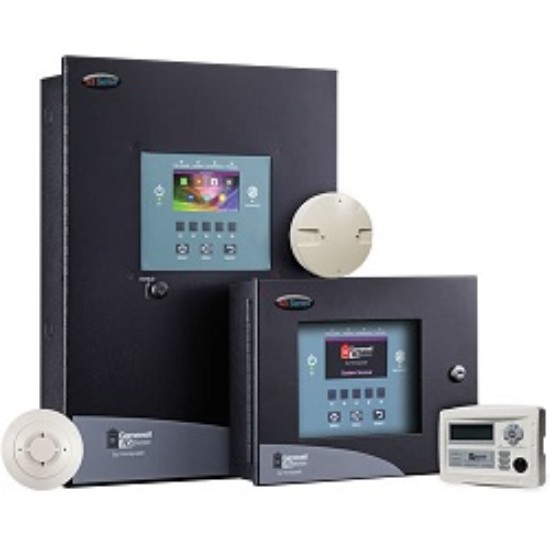
SWIFT stands for Smart Wireless Integrated Fire Technology. SWIFT systems provide a flexible, reliable solution for many applications that are problematic for traditional wired devices. SWIFT systems are a commercial wireless fire detection system using a robust, self-healing mesh technology. SWIFT sensors detect fire, just like their wired counterparts, while providing installation flexibility in a wireless format. This wireless technology is available for fire alarm control panels, voice evacuation panels, emergency communications systems, advanced detection, gas and flame detection, and notification appliances.
Traditional wired systems can be costly to install in concrete walls and ceilings, and with buried wires, they can also be obtrusive in surface mount conduit, or even dangerous if they are being installed in construction where asbestos is present. In addition, wireless devices are ideal for use in temporary structures such as portable classrooms and traveling exhibits. SWIFT systems are wireless, which make these potential problems obsolete. The systems can use any combination of modules, smoke and/or heat detectors.
SWIFT systems use a mesh network for communication where there is a child-parent relationship between devices, so that each device has two parents. This provides a second path for communication, to be used as a back-up in the event that one device can no longer operate for any reason. This back-up allows for the rest of the devices to still directly communicate with each other, or through one or more intermediate devices, even if one device becomes inoperable. The devices are also designed to find the strongest signal path for each device. SWIFT technology utilizes frequency hopping to prevent outside interference, whether intentional or accidental, to maintain your system security.
In addition, both wired and wireless devices can be present on the same fire alarm control panel, providing an integrated wired-wireless solution for increased installation potential. A system can have up to 50 devices per gateway, in any combination of detectors and modules. However, each device uses one address on the panel, so address capacity cannot exceed the panel limits.
Device spacing for wireless technology follows the NFPA guidelines. If signal strength is low, then an additional module or detector can be installed that will act as a repeater. Generally, it is better to use a module as a repeater, since detectors require additional maintenance.
For more in-depth information about this topic, check out A1’s Lunch & Learns for architects and engineers.
A1 is a leading expert on the latest technology in life safety. To find out more information or to ask a question, click here or call us at 1-800-859-6198.
